Last Updated on January 9, 2024 by Greg Gillson
I’ve put this resource together for you to answer your question: What birds are in my backyard in Oregon?
This article lists and discusses the identification of the most common birds in your backyard. The birds chosen in this article are compiled from actual data from the citizen science program eBird. Thus, it is more accurate than some other similar articles you may find on the web. I provide pictures of each bird species mentioned and I’ll tell how to attract them to your backyard.
These are the most common backyard birds in Oregon:
- American Robin
- Song Sparrow
- American Crow
- Dark-eyed Junco
- Northern Flicker
- Black-capped Chickadee
- Spotted Towhee
- European Starling
- California Scrub-Jay
- Steller’s Jay
- House Finch
- Red-winged Blackbird
- Anna’s Hummingbird
- Mourning Dove
- Red-breasted Nuthatch
- White-crowned Sparrow
- American Goldfinch
- Yellow-rumped Warbler
- Bewick’s Wren
- Golden-crowned Sparrow
- Lesser Goldfinch
- Ruby-crowned Kinglet
- Black-headed Grosbeak
- Western Wood-Pewee
- Barn Swallow
- Swainson’s Thrush
- Violet-green Swallow
- Cedar Waxwing
- Western Tanager
Oregon Birds and Birding in Oregon State
eBird lists over 550 types of birds as occurring in the state of Oregon.
The most common bird in Oregon: the most frequently seen bird in the state is American Robin. It is reported on 40% of bird watching lists.
If you are serious about knowing the birds native to Oregon, then check out eBird for Oregon. It has recent sightings and photos, illustrated checklists with weekly abundance bar charts for state, counties, and individual hotspots of the best birding locations.
If you want to know about other people interested in birds in your area, join a local bird group. The American Birding Association maintains a list of bird watching clubs for each state.
Oregon Bird Identification
This section is the species accounts. These are designed to help you to recognize birds you see in your backyard. I have used eBird to select the birds that are most common. “Common” means the birds seen most often throughout the year, not necessarily the most numerous.
Each species account starts with a photograph. In the identification section I am using size and shape and bill type before considering the color or patterns on the birds. I find these more reliable when trying to identify an unknown bird. Pay attention to body and tail shape and especially bill shape of birds you see, not just plumage color.
In the section on bird feeders and foods I tell how to attract each species. Not all types of backyard birds will come to feeders. But all backyard birds can be attracted with water. So don’t forget to add a birdbath to your bird feeding station.
Do you live in Central Oregon? Eastern Oregon? Western Oregon? Southern Oregon? Do you live in the Willamette Valley or on the Oregon Coast?
To appear in this article, most birds are widely distributed throughout the state and are often year-round residents. However, for those birds that are more localized in place or time, I list the general region and seasonality. Please see the section following these species accounts for the lists of common species by season.
Even if a species is found in a general area, they occur only in the habitat they prefer. So, the exact habitat of your neighborhood is important for the presence of absence of certain kinds of birds.
1. American Robin (Turdus migratorius)
This familiar bird is a resident in the northern half of the United States and a winter visitor in the southern half.
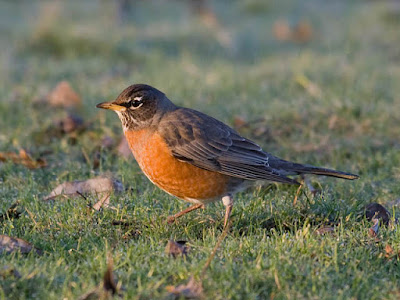 |
| American Robin. Greg Gillson |
Range in Oregon: American Robins are year-round residents throughout Oregon.
Identification: This is a key species for comparing with an unknown bird.
Size: 10 inches long from bill tip to tail tip. About the same size as a Blue Jay or one of the Scrub-Jays. Larger than Red-winged Blackbird. Smaller than a Mourning Dove.
Shape: Very plump with a fairly long tail.
Bill: Straight and fairly slender, curved at the tip.
Color: Gray-brown upperparts, rusty orange breast.
Habitat, range & behavior: Open woodlands, farmlands, urban parks and lawns.
Migratory, breeds north across Alaska and Canada. Resident in most of the United States (lower 48). Winters in the United States, Mexico, to central America.
Hops on your lawn turning head this way and that looking for food. Their caroling song is one of the early signs of spring in the north.
Food and feeder preference: Worms and other invertebrates in the lawn. May eat fruit from a tray feeder or the ground. Eat small berries from trees and bushes.
2. Song Sparrow (Melospiza melodia)
A common bird, but variable, and similar to many other streaked brown sparrows.
 |
| Song Sparrow. Greg Gillson |
Range in Oregon: Song Sparrows are year-round residents throughout Oregon.
Identification:
Size: A smaller bird, similar in size to House Finch and juncos. Larger than chickadees and goldfinches. Smaller than White-crowned Sparrows or Spotted/Eastern towhees.
Shape: Plump with round head, long rounded tail.
Bill: Short, conical.
Color: Highly variable in darkness and color saturation across its range (dark rusty to pale gray). Generally gray-brown above with dark brown streaking on back. Complicated head pattern. Streaking on sides and breast converge into dense central breast spot.
Habitat, range & behavior: Thickets, especially near water. Backyard shrubbery.
Resident in western United States, western Canada, coastal southern Alaska, northeastern US. In summer also moves into mid-Canada and northern half of US. In the winter found in most of the US lower-48. Also, a population in central Mexico.
Forages on ground, never far from low cover to which they fly if startled.
Food and feeder preference: They feed on seeds and insects near the ground. Will visit hopper and tray feeders for mixed bird seed.
3. American Crow (Corvus brachyrhynchos)
This larger all-black bird is common in cities and country. Its cawing call is familiar to most people.
 |
| American Crow. Greg Gillson |
Range in Oregon: American Crows are year-round residents throughout Oregon.
Identification: This is a key species for comparing with an unknown bird.
Size: About 17-1/2 inches long from bill tip to tail tip, though there is much size variation throughout its range. Larger than blackbirds and grackles. Smaller than ravens.
Shape: Thick neck, large head, rather short square-ended tail. Longer legs. In flight has rounded wing tips with each primary feather separated from others forming “fingers.”
Bill: As long as head, thick, black.
Color: Glossy black throughout.
Habitat, range & behavior: They prefer open areas with trees, fields, farms, cities.
They are common across most of the United States lower-48, except in the desert southwest. They move into southern Canada in summer.
They gather in evening communal roosts in large flocks that may number into the thousands and then move out at dawn into the surrounding area.
Food and feeder preference: Omnivorous, they feed on large insects, grain, small mammals, carrion. You probably don’t want these large entirely black birds in your backyard feeders. So don’t feed table scraps to birds.
4. Dark-eyed Junco (Junco hyemalis)
Colloquially called “snowbirds,” they often arrive in backyards in winter from nearby mountain forests or more northern climes.
 |
| Dark-eyed Junco. Greg Gillson |
Range in Oregon: Dark-eyed Juncos are year-round residents in most of Oregon, but winter visitors only in the southeastern part of Oregon.
Identification:
Size: Small birds about the size of a House Finch.
Shape: Round body, short neck, round head, fairly long square-ended tail.
Bill: Short, pointed, conical, pink.
Color: Eastern birds are a darker all-gray with white belly. Western birds have jet black hood over their head, brown back, and pink sides.
Habitat, range & behavior: Breed in coniferous forests. Winters widely. Avoids heavy brush, preferring widely spaced bushes.
Breeds across most of Canada, Alaska, and the western half of the United States. Winters from southern Canada and all of the lower 48-states to extreme northern Mexico.
Spend much of their time hopping and feeding on the ground.
Food and feeder preference: Eats mostly seeds, also insects in summer. Readily feed at backyard feeders on mixed seeds on hopper or tray feeders and ground.
You may like my in-depth article on attracting Dark-eyed Juncos.
5. Northern Flicker (Colaptes auratus)
Of all the bird identification questions I get asked, this common larger backyard bird is the bird most people ask about. It doesn’t occur to those unfamiliar with it that this could be a woodpecker.
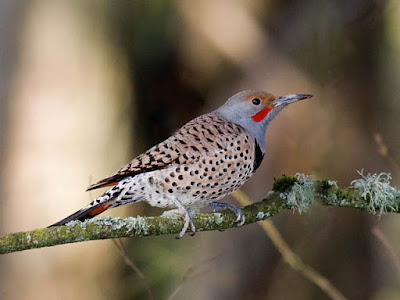 |
| Northern Flicker. Greg Gillson |
Range in Oregon: Northern Flickers are year-round residents throughout Oregon, except summer residents only in the high Cascades.
Identification:
Size: About the size of a Mourning Dove. Larger than a robin.
Shape: Stocky with short legs, short tail, big head.
Bill: As long as head, thin, slightly curved.
Color: Back is brown with black bars. Under parts pinkish with black spots. Undersides of black wing and tail feathers are bright salmon red (West) or yellow (East). Head gray (West) or brown (East) and males with red (West) or black (East) whisker marks and nape marks (East). Black crescent across chest. White rump seen in flight.
Habitat, range & behavior: Found in woodland edges and forests.
Year-round resident from extreme southern Canada, across all of the lower-48 states and in the mountains of Mexico and Middle America. In summer breeds northward well into Canada and Alaska.
Frequently noted hopping on ground pecking in the ground for insects. In late spring, males proclaim their territory by rapid pounding on a hollow tree branch, though the ringing of metal downspouts at dawn is louder and carries much farther, to the exasperation of anyone trying to sleep inside!
Food and feeder preference: Ants and beetles are their primary foods. Will eat black oil sunflower seeds and are attracted to suet.
6. Black-capped Chickadee (Poecile atricapillus)
This is a common backyard bird in the northern half of the United States.
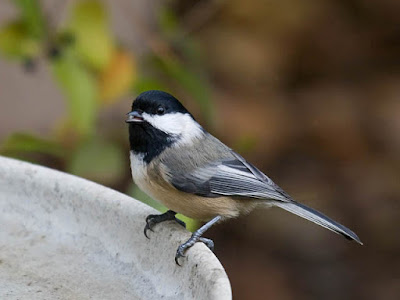 |
| Black-capped Chickadee. Greg Gillson |
Range in Oregon: Black-capped Chickadees are year-round residents throughout most of Oregon, absent from the southeastern part of the state.
Identification:
Size: Chickadees are small birds, the same general size as an American Goldfinch.
Shape: Round body, big round head, long tail with rounded tip.
Bill: Short, straight, stout.
Color: Gray above, buffy below. Black cap and bib with white lower face. White edges on wing feathers.
Habitat, range & behavior: Deciduous and mixed forests.
They range from the northern half of the United States, southern half of Canada, and most of Alaska.
Small flocks flit actively from tree to tree acrobatically gleaning insects from twig tips. In winter chickadees make up the core of mixed-species flocks also containing nuthatches, kinglets, creepers, woodpeckers and others.
Food and feeder preference: Seeds, insects, berries. They eat at tube, hopper and tray feeders. They love black oil sunflower seeds and suet.
You may like my in-depth article on attracting Black-capped Chickadees.
7. Spotted Towhee (Pipilo maculatus)
Look for this bird scratching in the leaf litter under bushes at the edge of your yard.
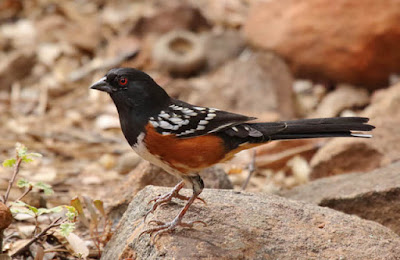 |
| Spotted Towhee. Greg Gillson |
Range in Oregon: Spotted Towhees are year-round residents throughout most of Oregon, but summer residents only in the high mountains.
Identification:
Size: A large sparrow, slightly larger than a White-crowned Sparrow. Larger than a House Finch. Smaller than a starling.
Shape: A plump, large-headed sparrow with a full rounded tail.
Bill: Short, pointed, conical.
Color: Black above including hood. Variable number of white spots on back and wings depending upon location. White tail corners. White belly. Rusty orange sides. Red eye. Females paler, more brownish.
Habitat, range & behavior: Found in brushy areas, chaparral, mountain forest understory.
Found throughout the western half of the United States, mountains of Mexico. In summer to southwestern Canada. In winter to Texas.
Food and feeder preference: Insects, seeds, and berries. At your birdfeeder will eat seeds on ground or platform feeder.
8. European Starling (Sturnus vulgaris)
Introduced to North America in the late 1800’s, they crossed the continent, often to the detriment of native cavity-nesting birds. The prime example of an invasive species.
 |
| European Starling. Greg Gillson |
Range in Oregon: European Starlings are year-round residents throughout Oregon.
Identification: This is a key species for comparing with an unknown bird.
Size: 8-1/2 inches from bill tip to tail tip. About the size of a Red-winged Blackbird. Smaller than an American Robin. Larger than a White-crowned Sparrow or Spotted/Eastern towhee.
Shape: Stocky with large head, short square-ended tail. Longer legs.
Bill: As long as head. Sharp pointed. Yellow in spring, otherwise dark.
Color: They are grayish brown much of the year, with glossy iridescence and white spotting during the spring.
Habitat, range & behavior: Lowland birds that need trees large enough for nest cavities but plenty of open area for feeding. They are most abundant in urban and suburban areas where they find food and artificial nest cavities.
Resident from coast-to-coast from southern Canada to northern Mexico. In summer north across Canada and Alaska. Native range is Europe to Pakistan, north Africa.
Often viewed as a pest, starlings often bully other backyard birds, taking over bird feeders, and stealing nest cavities from smaller native birds. In winter they can form into flocks of tens of thousands.
Food and feeder preference: Primarily insects when available, often feeding on the ground. Discourage them from your backyard hopper and tray feeders by never feeding birds table scraps (including bread or meat). They have weak feet and do not perch well on tube feeders. A cage mesh around smaller hopper feeders may keep them out.
9. California Scrub-Jay (Aphelocoma californica)
This is California’s common lowland jay, brash and noisy.
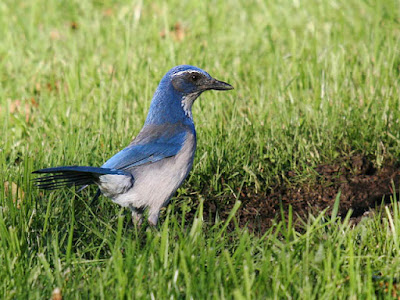 |
| California Scrub-Jay. Greg Gillson |
Range in Oregon: California Scrub-Jays are year-round residents in western Oregon, absent from deep forests in the Cascades and local in the northern coastal region.
Identification:
Size: This bird is the size of an American Robin or Northern Mockingbird. They are larger than a European Starling or Red-winged Blackbird. Smaller than a Mourning Dove.
Shape: Strong body, thick neck, big head. Long legs. Fairly long full tail.
Bill: Long, stout, curved near tip.
Color: Deep azure blue upperparts, wings and tail with gray-brown back. Black bill and mask. White under parts with partial blue necklace across chest.
Habitat, range & behavior: Oak woodlands, chaparral, residential areas.
Found along west coast from northern Baja to Washington state.
They forage on the ground, caching food to save for later.
Food and feeder preference: Omnivorous, they eat insects, berries, small animals, bird eggs. At hopper and tray feeders they may harass other birds, and gulp down large quantities of black oil sunflower seeds and peanuts to go bury. Thus, some people put wire mesh cages over their hopper and tube feeders to keep the jays out–smaller birds can get through the mesh.
10. Steller’s Jay (Cyanocitta stelleri)
This jay with the black crested head is common in the damp mountain forests of the West.
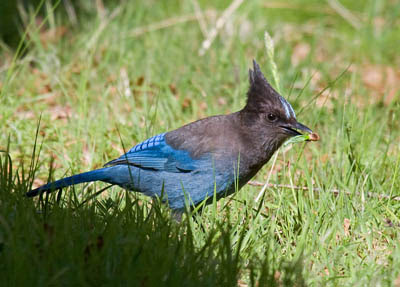 |
| Steller’s Jay. Greg Gillson |
Range in Oregon: Steller’s Jays are year-round residents throughout much of Oregon, but absent in the southeastern part of the state.
Identification:
Size: These birds are the size of American Robins or Northern Mockingbirds. They are larger than European Starlings or Red-winged Blackbirds.
Shape: Strong body, thick neck, big head with prominent crest. Strong legs and feet. Full rounded tail.
Bill: Long, stout, curved near tip.
Color: Deep blue body throughout. Black head and crest.
Habitat, range & behavior: Coniferous and mixed forests, residential areas near such forests. Damp forests near the coast to mountain forests near timberline.
A resident from coastal Alaska to Middle America. Northwest coastal forests, mountains of West Coast and Rocky Mountains, south through Mexico.
Forage on the ground, hopping. Climbs tree by hopping up branches. Scavenge for food in campgrounds. May be found in large flocks. Bold, aggressive, social.
Food and feeder preference: Omnivorous, they eat a wide variety of nuts, fruits, seeds, berries, eggs, invertebrates, small rodents, human food scraps. At hopper and tray feeders will eat sunflower seeds, nuts, including peanuts. Eat suet.
11. House Finch (Haemorhous mexicanus)
Originally a bird of the West, now found across most of the US. There are other red finches, but these are the ones most likely in residential areas.
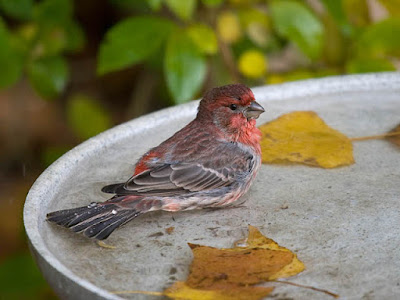 |
| House Finch. Greg Gillson |
Range in Oregon: House Finches are year-round residents throughout Oregon, except absent in the higher Cascades.
Identification: This is a key species for comparing with an unknown bird.
Size: About 6 inches from bill tip to tail tip. Larger than goldfinches and chickadees. Smaller than a White-crowned Sparrows or Spotted/Eastern towhees.
Shape: Medium build with a medium-long notched tail. Round head.
Bill: Short, conical.
Color: Brown and gray above with streaks on the sides of the pale underparts. Males with red (sometimes orange or rarely yellow) crown, chest, rump.
Habitat, range & behavior: You’ll find small flocks on wires, in short treetops and in bushes. Originally deserts and grasslands. Rural areas and towns are where they’re now most common.
Formerly found in the western United States and Mexico. Then introduced into the northeastern United States, but now found in nearly all of the lower-48 states and extreme southern Canada. Rare in plains states (Dakotas to Texas) and southern Florida.
House Finches are not territorial, but males sing throughout the year–a lively, wiry song ending in a couple of buzzy notes.
Food and feeder preference: They love sunflower seeds and tube feeders. May eat from thistle socks.
You may like my in-depth article on attracting House Finches.
12. Red-winged Blackbird (Agelaius phoeniceus)
These noisy flocking birds are most often found in marshes. But in winter they are found in backyards.
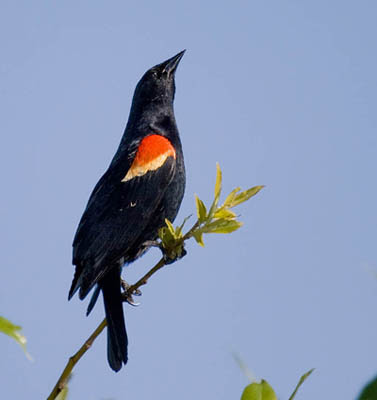 |
| Male Red-winged Blackbird. Greg Gillson. |
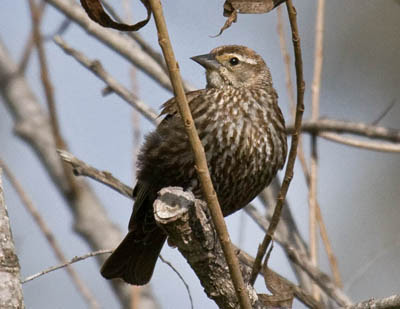 |
| Female Red-winged Blackbird. Greg Gillson. |
Range in Oregon: Red-winged Blackbirds are year-round residents throughout Oregon.
Identification: This is a key species for comparing with an unknown bird.
Size: About 8-3/4 inches long from bill tip to tail tip. About the size of a Northern Cardinal. Smaller than an American Robin.
Shape: Pot-bellied with a longer bill and flat forehead. Tail average.
Bill: Long and sharp pointed.
Color: Males are black with red and yellow shoulder patch. Females are streaked brown and rusty (sparrow-like but pointed bill and flat forehead).
Habitat, range, and behavior: Cattail marshes and wetlands are their summer habitat. In winter they feed in grain fields.
They breed across most of the North American continent. In winter they withdraw from most of Alaska and Canada.
They are found in colonies in summer and large flocks in winter.
Food and feeder preference: They eat insects in summer. In winter they eat grain and seeds. They visit feeders, more often in large winter flocks, and eat most seeds and suet.
13. Anna’s Hummingbird (Calypte anna)
This West Coast big resident hummingbird is everywhere there are people!
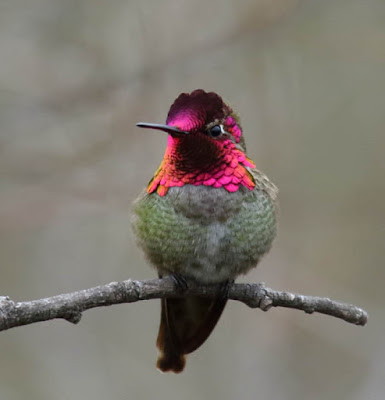 |
| Anna’s Hummingbird. Greg Gillson. |
Range in Oregon: Anna’s Hummingbirds are summer residents in western half of Oregon, year-round resident in western 1/3 of state.
Identification:
Size: Slightly larger than widespread hummingbirds like Ruby-throated in the east and Rufous Hummingbird in the west. Smaller than a goldfinch or chickadee.
Shape: Plump, with long wings covering tail. Unmistakable long bill.
Bill: Longer than head, round, slightly downcurved.
Color: Green upper parts, gray under parts with greenish cast on sides. Male with entire head and throat covered in iridescent metallic rose pink. Female usually has pink throat spot.
Habitat, range & behavior: Chaparral, open woods, suburban gardens all host this species.
Formerly only in northern Baja and southern California they expanded to Arizona, and all the way to southern Alaska along the Pacific coast, following plantings of winter blooming flowers and the popularity of placing out hummingbird feeders.
Nest early (December to February), even as they colonize northward and encounter snow in winter.
Food and feeder preference: Nectar and small insects is the main food of Anna’s Hummingbirds. Both are available in flowering plants. Quickly find hummingbird feeders filled with sugar water.
14. Mourning Dove (Zenaida macroura)
Mourning Doves are the most widespread and most frequent backyard bird in the Lower 48 states of the United States.
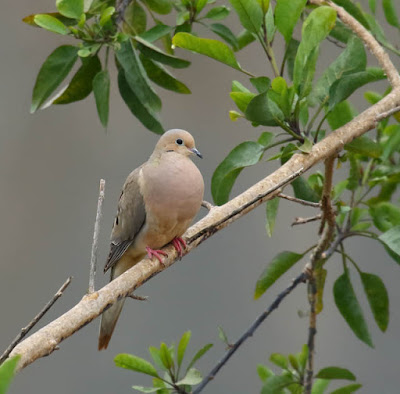 |
| Mourning Dove. Greg Gillson. |
Range in Oregon: Mourning Doves are year-round residents throughout Oregon, but summer resident only in high mountains.
Identification: This is a key species for comparing with an unknown bird.
Size: About 12 inches long from bill tip to tail tip. About same size as Northern Flicker. Larger than American Robin. Slightly smaller than domestic city pigeon.
Shape: Very plump with a small round head. Tail is long and pointed. Legs are short.
Bill: Small and rather slender.
Color: Pale brown-pink body, darker wings and tail. White edges on side of tail.
Habitat, range & behavior: Semi-open areas such as urban areas, farmlands, woods. Often seen perched on wires, fences.
It is a resident across the lower-48 states and Mexico, with some movement out of northern areas in winter.
Their mournful cooing is a familiar spring birdsong.
Food and feeder preference: Mourning Doves eat seeds almost exclusively. Attract with black oil sunflower seeds on a large sturdy tray feeder or on the ground.
15. Red-breasted Nuthatch (Sitta canadensis)
These small birds are common in conifer groves and mountain forests.
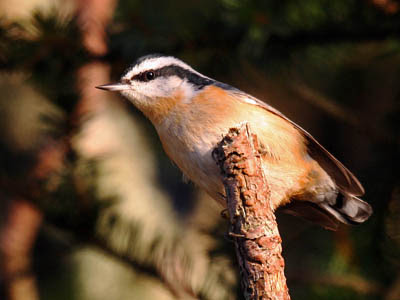 |
| Red-breasted Nuthatch. Greg Gillson. |
Range in Oregon: Red-breasted Nuthatches are year-round residents throughout most of Oregon, winter visitors only in southeastern Oregon.
Identification:
Size: Smaller than Black-capped Chickadees and American Goldfinches, larger than kinglets.
Shape: Compact body with large head on short neck. Stubby tail.
Bill: Fairly long and sharp-pointed.
Color: Dark blue-gray back and upper parts. Black crown and line through eye, showing long white eyebrow. White face and rusty underparts. Females paler.
Habitat, range & behavior: Conifer trees in forests and residential areas.
Found from Alaska and across Canada, mountains of Northeast and much of the West. Winter visitor south throughout most of the United States.
Crawls actively on bark on tree trunks and around smaller branches, often head-first down the tree.
Food and feeder preference: Eat insects and invertebrates. Cache nuts and seeds in fall to eat later in the winter. At feeders eat sunflower seeds, peanuts, other nuts from hopper and tube feeders, and suet.
16. White-crowned Sparrow (Zonotrichia leucophrys)
A common winter visitor to backyards throughout the United States.
 |
| White-crowned Sparrow. Greg Gillson. |
Range in Oregon: Different populations have different ranges and migratory timing. The result is that White-crowned Sparrows are found year-round throughout much of the state, but absent from mountains in winter.
Identification: This is a key species for comparing with an unknown bird.
Size: About 7 inches. A large sparrow near size of Spotted/Eastern towhee. Larger than House Finch. Smaller than Starling or Red-winged Blackbird.
Shape: Longer plump body, round head, long tail.
Bill: Short and conical.
Color: Brown back, wings, tail, gray under parts, black-and-white striped crown. For their first year, immature birds have tan and reddish-brown striped crowns.
Habitat, range & behavior: Open and shrubby areas.
Various forms breed across the Arctic Canada and Alaska and in mountains in western Canada and the United States.
They sing in spring migration as they move northward. Different populations have slightly different songs.
Food and feeder preference: White-crowned Sparrows eat weed seeds, grain, insects. Eat black oil sunflower seeds and other seeds on hopper and tray feeders.
17. American Goldfinch (Spinus tristis)
A beautiful tiny finch familiar to many in its bright yellow summer plumage. Colloquially called a “wild canary.”
 |
| American Goldfinch. Greg Gillson |
Range in Oregon: American Goldfinches are year-round residents through much of Oregon, summer resident only in higher mountains, winter visitors only in parts of southeastern Oregon.
Identification: This is a key species for comparing with an unknown bird.
Size: Very small at about 5 inches from bill tip to tail tip. Similar in size to a chickadee. Larger than hummingbirds. Smaller than juncos and House Finches.
Shape: Tiny, somewhat plump with larger head and short tail.
Bill: Short, conical, pink.
Color: Males in summer are bright lemon yellow with black forehead and black wings and tail with white bars. White under tail coverts. Females are dull olive, wings and tail browner. Winter birds are pale grayish-yellow with tan and brown wings and tail.
Habitat, range & behavior: This species is found in weedy fields and similar clearings with thistles and similar plants.
It is found coast-to-coast throughout the year across most of the middle lower-48 states. In summer moves north to the Canada border. In the winter found south to the Mexico border.
The flight is highly undulating, rising and falling as they flap in short bursts.
Besides a long, sweet lilting song, they call in flight a lilting 4-part: “potato chip!”
Food and feeder preference: Feeds on weed seeds, thistle seed. May eat black oil sunflower seeds from tube feeder. Love Nyjer seed in a feeder called a “thistle sock.”
You may like my in-depth article on attracting American Goldfinches.
18. Yellow-rumped Warbler (Setophaga coronata)
An abundant winter visitor in the southern United States to treetops and weedy areas
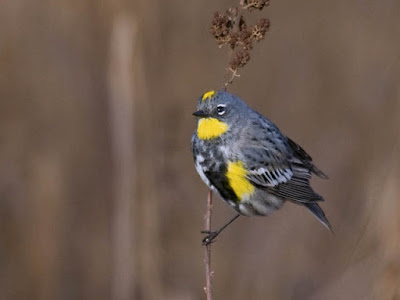 |
| Yellow-rumped Warbler. Greg Gillson. |
Range in Oregon: Two populations. Myrtle in migration throughout Oregon, and winter visitor in western Oregon. Audubon’s summer resident in mountains throughout Oregon, wintering in western Oregon.
Identification:
Size: Small, they are a bit larger than chickadees and goldfinches. They are smaller than House Finches and juncos.
Shape: Plump and neckless with a shorter tail.
Bill: Short, slender, straight, pointed.
Color: Breeding plumage in spring is blue-gray on the upper parts, black sides and chest, yellow rump, yellow on sides. Two forms: western form with yellow throat and large white wing patch; eastern and northern form with white throat and two white wing bars. In winter plumage both forms are gray-brown above, pale cream below. Yellow rump and white tail corners in flight.
Habitat, range & behavior: In breeding season mostly in coniferous or mixed forests, in mountains in west. In winter open areas with fruiting shrubs and scattered trees.
Breed across Canada and Alaska and in conifer forests in the west. Winter along both coasts and the southern states through Middle America. There are also non-migratory forms in Mexico and Guatemala.
They tend to forage in outer branches about half way up the tree.
Food and feeder preference: Yellow-rumped Warblers eat mainly insects in the summer. They switch to waxy berries and fruit in winter. They are thus able to winter farther north than other warblers. They are attracted to suet feeders.
19. Bewick’s Wren (Thryomanes bewickii)
This is a brush-loving bird that may hide in your backyard hedges.
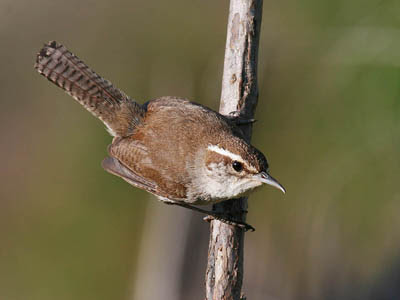 |
| Bewick’s Wren. Greg Gillson. |
Range in Oregon: Bewick’s Wren is a year-round resident in western and northern Oregon.
Identification:
Size: These are fairly small birds, about the size of House Finches.
Shape: They are rather stocky, with short neck, long floppy tail, fairly long legs.
Bill: Long, thin, slightly curved.
Color: Different populations can be more gray or more brown. Barred brown and black tail. Pale gray under parts. The white eyebrow is diagnostic.
Habitat, range, and behavior: These birds are found in brushy tangles, chaparral, backyard bushes.
These birds live along the West Coast from southern British Columba southward into Mexico, the Southwest, east to Missouri.
They stay hidden in dense brush except in spring when they sing loudly from exposed perches.
Food and feeder preference: Bewick’s Wrens eat primarily insects and invertebrates. They will come to feeders in winter for suet.
20. Golden-crowned Sparrow (Zonotrichia atricapilla)
In winter, Golden-crowned Sparrows have a dully striped crown, very similar to the brown-and-tan crown pattern of White-crowned Sparrows in their first winter.
 |
| Golden-crowned Sparrow. Greg Gillson. |
Range in Oregon: Golden-crowned Sparrows are migrants throughout Oregon, and winter visitors in western Oregon.
Identification:
Size: These are the same size as White-crowned Sparrows, a larger sparrow.
Shape: These are the same shape as White-crowned Sparrows. They are fairly large and long-tailed sparrows.
Bill: Short and stout conical bill. Dark colored.
Color: Tan brown above and striped with dark brown and pale gray on the back. Under parts gray with buff warm tones on the flanks. Breeding crown has yellow center (dull in winter) outlined with black. In winter the crown is finely streaked brown with a yellow tinge on the fore crown.
Habitat, range, and behavior: Boreal and tree line for breeding. In winter, tangles in woodland edges, brushy roadside edges with small saplings.
These sparrows breed from Alaska to southern British Columbia. They spend the winter from southern British Columbia to northern Baja California.
They tend to spend the winters in flocks with White-crowned Sparrows and Dark-eyed Juncos. They come out into the open to feed on the ground, such as a road edge, then flush back to into the tangles when disturbed.
Food and feeder preference: They eat more buds and plant material than White-crowned Sparrows. They love black oil sunflower seeds at hopper and platform feeders.
21. Lesser Goldfinch (Spinus psaltria)
This bird replaces American Goldfinch in drier parts of the southwestern US.
 |
| Lesser Goldfinch. Greg Gillson. |
Range in Oregon: Most Lesser Goldfinches are year-round residents in western Oregon and summer residents only in eastern Oregon.
Identification:
Size: A small bird. Slightly smaller than American Goldfinch, but close.
Shape: Big head, neckless, short forked tail.
Bill: Short, small, conical.
Color: Green back, yellow underparts including under tail coverts. Black wings and tail with white marks. Male with black cap on forecrown. Keeps the same bright yellow plumage year-round, unlike American Goldfinch.
Habitat, range & behavior: Open scrubby woodlands of oak or other trees, fields, grasslands.
Found in the western and southwestern US, into the Great Basin in summer. Found southward to Middle America.
They sometimes gather into flocks of hundreds to feed in weedy fields.
Food and feeder preference: Lesser Goldfinches eat mostly thistle seeds, some insects. At your feeder they will eat black oil sunflower seeds at a tube feeder but prefer Niger seeds in a “thistle sock” feeder.
22. Ruby-crowned Kinglet (Regulus calendula)
These tiny little hyperactive balls of feathers are very similar in appearance to sluggish Hutton’s Vireos. Note the yellow feet and skinny black legs of the kinglet.
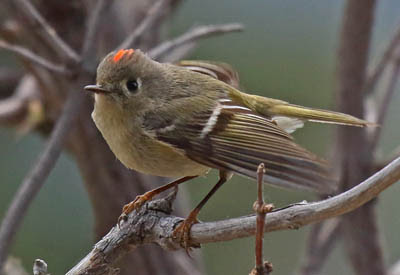 |
| Ruby-crowned Kinglet. Greg Gillson. |
Range in Oregon: Ruby-crowned Kinglets are summer residents in high mountains, winter visitors to remaining lower parts of Oregon.
Identification:
Size: Smaller than a chickadee or goldfinch.
Shape: Plump, almost round body with round head merging into the body almost without neck. Very short tail. Thin legs.
Bill: Very short, rather thin.
Color: Olive-green, tending toward gray, especially on the head. Paler yellow-green below. Wing gray with yellow-green edges to the wing feathers. Two white wing bars with distinctive black panel below the lower wing panel. White eye ring slightly broken on top and bottom. Red crown of male only shows when agitated. Legs very thin, black, with obvious yellow soles to the feet.
Habitat, range, and behavior: Mountain conifers in summer, brushy patches and chaparral in winter. Residential landscaping hedges and bushes.
Breeds in Alaska, across Canada, and mountains of the West. Migrates through all of US. Winters in coastal East, Southeast, West, into Mexico.
Active flitting from branch to branch, in interior of bushes and small trees, in short flap-hops. Constantly twitches wings. Hover-gleans at leaf tips.
Food and feeder preference: Ruby-crowned Kinglets feed in bushes next to house looking for spiders and insects. May eat at suet feeder.
23. Black-headed Grosbeak (Pheucticus melanocephalus)
This is the western counterpart of the Rose-breasted Grosbeak that is common in the East.
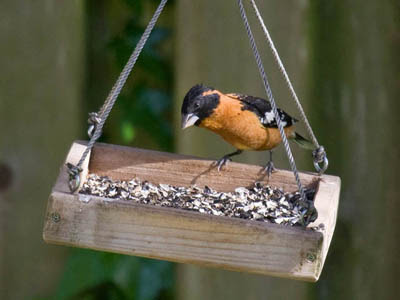 |
| Black-headed Grosbeak. Greg Gillson. |
Range in Oregon: Black-headed Grosbeaks are summer residents throughout Oregon.
Identification:
Size: Larger than Spotted Towhee. Smaller than American Robin. Similar in size to Red-winged Blackbird.
Shape: Kind of a chunky bird with pot belly. Large head. Somewhat short tail.
Bill: Very heavy and stout. Triangular.
Color: Males: black face. Black and orange striped back. Wings black with white patches and spots. Tail black with white corners. Underparts orange, yellow on the belly. Females and young for first year-and-a-half: face striped black and cream. Pale orange and yellow under parts. Striped brown and orange back. Wings brownish with white wing bars.
Habitat, range & behavior: Deciduous woods and large shade trees in residential yards.
Breeds in western Canada and western United States. Winters in Mexico.
Males often sing a robin-like song from the top of a large shade tree, such as a big leaf maple.
Food and feeder preference: Beetles, spiders, fruit, seeds, and berries are favorite foods. At backyard hopper feeder they love black oil sunflower seeds.
24. Western Wood-Pewee (Contopus sordidulus)
These birds sing their burry pee-wee, pee-year song into summer and throughout the day.
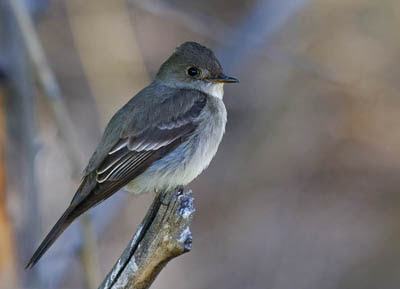 |
| Western Wood-Pewee. Greg Gillson. |
Range in Oregon: Western Wood-Pewees are summer residents throughout Oregon.
Identification:
Size: Just slightly bigger than a House Finch.
Shape: Large head and big chest, long wings and tail. Upright posture.
Bill: Medium length compared to head, but wide at base and flat. Mostly dark, with a touch of yellow-orange at base of lower mandible.
Color: A dull gray-green-brown. Two broad pale wing bars. Under parts pale with grayish sides, often show yellow on the belly when in shade.
Habitat, range & behavior: A bird of open woodlands.
Summer resident from Alaska, western Canada, western United States and into Mexico. Winters in South America.
These larger flycatchers sit motionless on tip of dead branch, then fly out to snap up a flying insect, then return to their original perch again.
Food and feeder preference: Feed on flying insects. Do not come to feeders.
25. Barn Swallow (Hirundo rustica)
These swallows are widely distributed throughout the world, primarily breeding in the northern hemisphere, and wintering in the mid-latitudes and southern hemisphere.
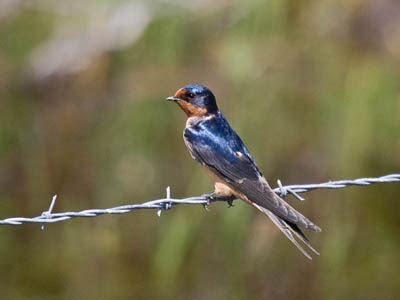 |
| Barn Swallow. Greg Gillson. |
Range in Oregon: Barn Swallows are summer residents throughout Oregon.
Identification:
Size: About the size of a House Finch but with a much longer tail.
Shape: Stocky, short necked but with long body and tail. Tail is forked, with very long outer tail feathers. Wings pointed.
Bill: Short, wide.
Color: Glossy dark purplish-blue above. Pinkish-orange below.
Habitat, range & behavior: Barn Swallows live in open country, frequently near humans. Farmlands. Nest in barns, under small bridges.
In North America breed from Mexico to northern Canada and Alaska, wintering from southern Mexico throughout most of South America.
Frequently seen swooping low over the ground hunting flying insects. Perch on wires, fences. Voice is twitters and chirps with grating sounds.
Food and feeder preference: Eat flying insects on the wing and are not attracted to backyard feeders.
26. Swainson’s Thrush (Catharus ustulatus)
Birds migrate at night. Their distinctive weep calls are often heard in backyards as they fly over, often several birds per minute in late September.
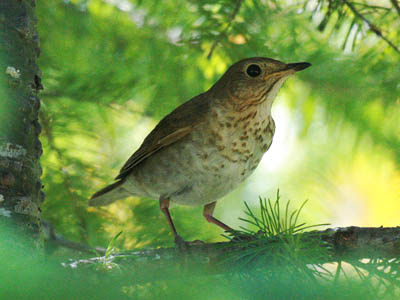 |
| Swainson’s Thrush. Greg Gillson. |
Range in Oregon: Swainson’s Thrushes are summer residents in western Oregon and the northeastern corner of Oregon. They are found during migration throughout Oregon.
Identification:
Size: These are about the length of a White-crowned Sparrow–but with larger body and shorter tail. Smaller than Red-winged Blackbird.
Shape: Large breast. Square-ended tail. Long face and bill.
Bill: Rather long and straight.
Color: Brown above, western populations showing a slightly rusty cast. Breast is cream and belly paler. Blurry brown spots on upper breast, fainter along sides. Thin buffy eye ring.
Habitat, range & behavior: Alder under story in moist woods, re-growing clear cuts. Streamside woodlands.
Breed in summer from Alaska and across Canada, the Northeast, and widely in forests of the West. Winter in South America.
Food and feeder preference: They eat invertebrates and fruit. Do not come to feeders. Will come to low bird baths.
27. Violet-green Swallow (Tachycineta thalassina)
 |
| Violet-green Swallow. Greg Gillson. |
Range in Oregon: Violet-green Swallows are summer residents throughout Oregon.
Identification:
Size: About the size of American Goldfinches, but with longer wings.
Shape: Round head, thicker chest and long thin body. Very short tail. Long pointed wings.
Bill: Very short and wide.
Color: Lime green upper back, violet lower back. White sides to rump. Black wings and tail. White underparts and face that nearly encircles eyes.
Habitat, range & behavior: Open skies above forests and residential areas.
Summers from Alaska, western Canada, and the western US and Mexico. Winters in southern Mexico.
Food and feeder preference: Flying insects caught on the wing. Do not come to bird feeders but will use bird houses.
28. Cedar Waxwing (Bombycilla cedrorum)
Waxy red tips to the wing feathers give these birds their unique name. Maybe it’s the fancy crest. Maybe it’s the bandit mask. Maybe it’s the yellow band at the tip of its tail. But these are one of my favorite birds.
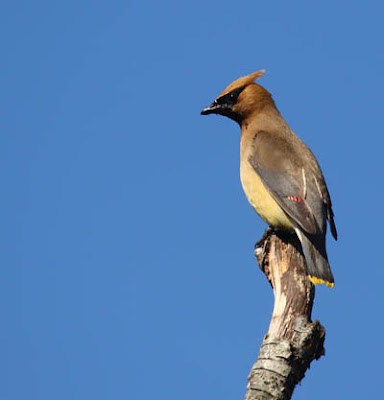 |
| Cedar Waxwing. Greg Gillson. |
Range in Oregon: Cedar Waxwings are year-round residents throughout most of Oregon.
Identification:
Size: Smaller than European Starlings. Larger than House Sparrows.
Shape: Similar to European Starling. Rather stocky. Short squared tail, but long under tail coverts. Large head. Pointed wings. Wispy crest.
Bill: Rather short, small, wide.
Color: Warm brown above with wispy crest. Black mask. Yellowish belly. White under tail coverts. Gray wings. Gray tail with yellow tip.
Habitat, range, & behavior: Deciduous woods, wooded streams and lakeshores, residential shade trees, fruit orchards.
Resident across the northern US. Summer resident in Canada. Winter visitor throughout all of US and Mexico.
Keep in tight flocks. Feed in trees and large bushes for berries. Fly catch over ponds and streams.
Food and feeder preference: Berries and flying insects. Usually don’t come to feeders unless fruit like cherries offered but will visit bird baths.
29. Western Tanager (Piranga ludoviciana)
These beautiful birds migrate at night. In spring all that night’s flying birds may stop when reaching a cold front. In a May morning dozens of birds may be found in hilltop backyards during such a migratory “fall out.”
 |
| Western Tanager. Greg Gillson. |
Range in Oregon: Western Tanagers are summer residents throughout most of Oregon, except treeless grasslands in northcentral and southeastern parts of the state.
Identification:
Size: Bigger than White-crowned Sparrows. About the size of Spotted Towhees.
Shape: Rather plump. Large head and bill. Good sized tail.
Bill: Fairly long and pointed. Swollen in the middle.
Color: Males are bright yellow with black wings and tail. Red face. Females are either paler yellow or grayish with green-gray wings and tail.
Habitat, range & behavior: Conifer forests.
Breed from western Canada throughout western United States. Winters in southern Mexico.
Breeding males often call and sing from tops of tallest conifers. In migration across Great Basin may be found on fence lines, sagebrush.
Food and feeder preference: They eat primarily insects. They like fruit, such as oranges at feeders, and will bathe in bird baths.
Common Birds in Oregon
To determine how common each species is I used the data from actual bird sightings from the citizen science program eBird. Birds are listed by frequency. That is, how often the species is recorded on checklists submitted to eBird (a percentage).
When choosing the birds to include in this article I leaned strongly to birds that are present throughout the year in good numbers. Thus, many of the common birds are year-round residents. This means that they live in the same location all year. They raise their young in your neighborhood. They don’t migrate. Or if the species does migrate, the ones living in your area don’t. If this is the case, some migrants may move into your area during certain times of year, adding to the same species that are in your yard full time.
Some migrant birds visit your yard during the “summer.” Often, they arrive in spring and remain until late fall. They nest and raise their young in your neighborhood. These are the summer residents.
Other migrant birds visit your backyard during the “winter.” Some of these winter visitors may arrive in July and remain into April. Others may only be found in the cold of December or January. They key here is that they nest and raise their young somewhere else. They only visit your yard in the non-breeding season.
Migration is an amazing spectacle.
There will be birds that fly through your region in spring or fall (or both). They may visit your backyard only a few days or weeks a year. They aren’t regular enough, or stay long enough, to be included in this article. But the number of briefly visiting migrant birds could double the number of species presented here. You may see them over time. Consult checklists in eBird for your county to see what is possible.
I have generally excluded common waterfowl, birds of prey, shorebirds, seabirds, and others that aren’t usually found in residential areas. But they may certainly fly over or be seen regularly if your home is on a shoreline, for instance.
Most common backyard birds in Oregon throughout the year
The following list is the backyard birds that are, on average, most common throughout the entire year. The list is ordered by most common based on the frequency of how often each species is recorded on checklists submitted to eBird.
- American Robin (40% frequency)
- Song Sparrow (38%)
- American Crow (33%)
- Dark-eyed Junco (32%)
- Northern Flicker (30%)
- Black-capped Chickadee (29%)
- Spotted Towhee (28%)
- European Starling (27%)
- California Scrub-Jay (26%)
- Steller’s Jay (21%)
- House Finch (20%)
- Red-winged Blackbird (19%)
- Anna’s Hummingbird (19%)
- Mourning Dove (15%)
- Red-breasted Nuthatch (15%)
- White-crowned Sparrow (14%)
- American Goldfinch (14%)
- Yellow-rumped Warbler (14%)
- Bewick’s Wren (13%)
- Golden-crowned Sparrow (13%)
- Lesser Goldfinch (12%)
Most common backyard birds in Oregon in winter
- Dark-eyed Junco (47% frequency)
- Song Sparrow (41%)
- American Robin (35%)
- Black-capped Chickadee (33%)
- Northern Flicker (32%)
- California Scrub-Jay (31%)
- American Crow (31%)
- European Starling (29%)
- Spotted Towhee (29%)
- Anna’s Hummingbird (23%)
- Golden-crowned Sparrow (21%)
- House Finch (20%)
- Red-winged Blackbird (%)
- Steller’s Jay (19%)
- Ruby-crowned Kinglet (17%)
Most common backyard birds in Oregon in summer
- American Robin (44% frequency)
- Song Sparrow (35%)
- American Crow (29%)
- Spotted Towhee (26%)
- Northern Flicker (23%)
- American Goldfinch (21%)
- Black-headed Grosbeak (21%)
- Western Wood-Pewee (21%)
- Black-capped Chickadee (21%)
- Dark-eye Junco (21%)
- Red-winged Blackbird (%)
- Barn Swallow (20%)
- Swainson’s Thrush (20%)
- European Starling (20%)
- Steller’s Jay (19%)
- Violet-green Swallow (19%)
- Mourning Dove (19%)
- California Scrub-Jay (18%)
- Cedar Waxwing (17%)
- House Finch (17%)
- Western Tanager (15%)
- Red-breasted Nuthatch (15%)
How do birds differ between winter and summer?
Dark-eyed Juncos, Black-capped Chickadees, California Scrub-Jays, Northern Flickers, European Starlings are more common in winter.
Black-headed Grosbeaks, Western Wood-Pewees, Barn Swallows, Swainson’s Thrushes are more common in summer.
Common Backyard Birds of Portland, Oregon
 |
| Red-breasted Nuthatch. Greg Gillson |
- American Crow (63% frequency)
- Song Sparrow (61%)
- Black-capped Chickadee (48%)
- American Robin (47%)
- Dark-eyed Junco (42%)
- Northern Flicker (41%)
- Spotted Towhee (37%)
- California Scrub-Jay (35%)
- House Finch (35%)
- Anna’s Hummingbird (35%)
- European Starling (32%)
- Steller’s Jay (26%)
- Bewick’s Wren (22%)
- Bushtit (21%)
- Red-breasted Nuthatch (21%)
American Crows, Song Sparrows, Black-capped Chickadees, Dark-eyed Juncos, Northern Flickers, Spotted Towhees, California Scrub-Jays, House Finches, Anna’s Hummingbirds are more common in Portland than in the state as a whole. This is likely due to the many different habitats found in the state dropping the average for the entire state, and the extensive suburban habitat in Portland.
Common Backyard Birds of Eugene, Oregon
- Song Sparrow (35% frequency)
- American Crow (34%)
- Black-capped Chickadee (33%)
- American Robin (31%)
- California Scrub-Jay (31%)
- Spotted Towhee (30%)
- Dark-eyed Junco (27%)
- European Starling (24%)
- Northern Flicker (24%)
- Anna’s Hummingbird (21%)
- Steller’s Jay (20%)
- House Finch (20%)
American Robins are less common, on average, than for the state as a whole.
Otherwise, the most common backyard birds in Eugene are the same as the state average.
Common Backyard Birds of Bend, Oregon
- American Robin (51% frequency)
- Mountain Chickadee (49%) Learn about this species on eBird
- Northern Flicker (45%)
- Dark-eyed Junco (40%)
- House Finch (33%)
- Pygmy Nuthatch (30%) Learn about this species on eBird
- Mourning Dove (29%)
- California Scrub-Jay (29%)
- Steller’s Jay (26%)
- Red-winged Blackbird (20%)
- Townsend’s Solitaire (20%) Learn about this species on eBird
The city of Bend in Central Oregon is influenced by birds of eastern Oregon and the high Cascades. Thus, birds in this town are much different than the birds of western Oregon towns.
Ponderosa loving Mountain Chickadees and Pygmy Nuthatches are much more common in Bend than in the rest of the state, on average. Juniper loving Townsend’s Solitaire are much more common in Bend than in western Oregon.
American Robins, House Finches are more common in Bend than the average in the rest of the state.
Spotted Towhees, American Crows, Black-capped Chickadees, Song Sparrows are less common year-round in Bend.
Wrapping Up
Beyond your backyard are forests, open plains and coastal areas that all boast many more common species of birds. Here are a few to whet your whistle.
Open Country Birds:
- Western Meadowlark: The state bird of Oregon, these bright yellow birds with black V-marks on their chests fill fields and grasslands with their melodious whistles.
- Mourning Dove: These grayish-brown doves with mournful cooing calls are abundant in open areas and gardens, often visiting feeders for seeds.
- House Finch: These energetic brown-streaked finches frequent feeders and open areas, offering their cheerful chirping songs.
- Common Raven: These intelligent black birds with hoarse croaking calls are found in various habitats, from mountains to grasslands, scavenging and hunting for food.
- Rock Pigeon: These familiar urban dwellers with gray bodies and iridescent necks are found in towns and cities across Oregon.
Forest and Woodland Birds:
- Steller’s Jay: These bold blue jays with black heads and white wing bars flash through forest canopies, displaying their acrobatic skills and loud, raucous calls.
- Clark’s Nutcracker: These large, blue-gray birds with black wings and white wing patches are masters of storing and hiding nuts, adding a playful element to mountain forests.
- Pygmy Nuthatch: These tiny gray birds with black caps and white undersides flit through conifer branches, searching for insects and seeds.
- Gray Flycatcher: These small olive-gray flycatchers perch on branches in woodlands, offering their high-pitched “bee-bee-bee” calls.
- Western Bluebird: These vibrant blue birds with orange breasts and white wing bars prefer open woodlands and edges, adding a splash of color to forested areas.
Coastal Birds:
- Black Oystercatcher: These striking black birds with orange beaks and red eyes patrol tidal flats and rocky shores, feeding on shellfish and other invertebrates.
- Common Murre: These black and white auklets with pointed bills nest on cliffs and rocky islands, often seen in large colonies diving for fish in the ocean.
- Bald Eagle: The majestic national bird of the United States frequents coastal areas, soaring effortlessly and often seen perched on snags or driftwood.
- Brandt’s Cormorant: These large black seabirds with hooked beaks dive for fish in coastal waters and gather on rocks and jetties to dry their wings.
- California Gull: These white-headed gulls with yellow legs and black wingtips scavenge beaches, harbors, and landfills, searching for food scraps and fish.
Frequently Asked Questions
What is the state bird of Oregon?
The proud state bird of Oregon is the Western Meadowlark (Sturnella neglecta)! These cheerful yellow-breasted birds with a black V-mark on their chests add a touch of song and beauty to the state’s diverse landscapes, from open fields and grasslands to foothills and valleys.
They were chosen as the state bird in 1925 after a statewide vote involving over 121,000 schoolchildren, beating out the Bobwhite and Northern Cardinal. The Western Meadowlark embodies the spirit of Oregon with its open grassland habitat, sweet whistled song, and resilience. Seeing these beautiful birds soaring and singing in the open plains is a quintessential Oregon experience.
So, the next time you hear that melodic whistled song while exploring the Beaver State, take a moment to appreciate the state bird and its captivating presence in the heart of Oregon!
What are the tiny gray birds in Oregon?
Bushtits are delightful little songbirds found in several areas of Oregon, adding their charming presence and energetic flitting to the forest canopy. Here are some tips for finding them:
Habitat:
- Coniferous forests: Bushtits prefer mature conifer forests, especially those with mixed stands of Douglas fir, western hemlock, and spruce. Look for them in dense evergreen woodlands with plenty of understory.
- Mixed forests: They can also be found in mixed forests with deciduous trees like maples and oaks, particularly near conifer patches. Edges of these forests and riparian areas may offer suitable habitat as well.
- Mid- to upper canopy: Keep your eyes up! Bushtits typically forage and nest in the higher branches of trees, rarely descending to the ground.

Location:
- Western Oregon: They are more common in western Oregon, particularly in the Coast Range and Willamette Valley. Look for them around Portland, Eugene, Salem, and Corvallis.
- Southern Oregon: Bushtits are less common in eastern Oregon, but you might find them in higher elevations of the Cascades and Siskiyou Mountains.
- State parks and protected areas: Many state parks and protected areas with mature conifer forests offer good chances of spotting Bushtits. Try places like Silver Falls State Park, Mount Pisgah Arboretum, or Oswald West State Park.
Does Oregon have a lot of birds?
Oregon definitely has a lot of birds, making it a haven for birdwatchers and nature enthusiasts alike! Here’s some evidence to support this claim:
Species Diversity:
- Oregon boasts a staggering 547 documented bird species, ranking fifth in the entire United States in terms of avian diversity. This list includes a vibrant mix of resident and migratory birds, offering year-round birding opportunities.
Habitat Variety:
- From the rugged coastline and lush forests to the arid high deserts and fertile valleys, Oregon provides a spectrum of diverse habitats suitable for countless bird species. Each habitat attracts specific avian communities, adding to the overall richness of the state’s birdlife.
Abundance of Common Birds:
- Many species considered common across the country thrive in Oregon. From vibrant American Robins and energetic Black-capped Chickadees in backyards, to soaring Western Meadowlarks in grasslands and majestic Bald Eagles along the coast, you’ll encounter a variety of birds in daily life.
Unique Species:
- Oregon is home to several unique and iconic bird species found nowhere else in the lower 48 states. These include the endangered Marbled Murrelet, the playful Clark’s Nutcracker, and the stunning Steller’s Jay, adding a special touch to the state’s birding experience.
Birdwatching Popularity:
- Oregon’s rich birdlife and diverse habitats attract birding enthusiasts from all over the world. Numerous birding festivals, guided tours, and birding communities thrive in the state, reflecting the passion for observing and appreciating these feathered friends.
Related Articles:
Red, Orange, & Yellow Birds of Oregon
Feeding Winter Birds in Oregon
34 of the most common birds in the United States (with photos)
Please also check out my recommended products page. There I maintain a list of the best feeders, bird foods, binoculars, bird baths, fountains, books and other bird watching items.



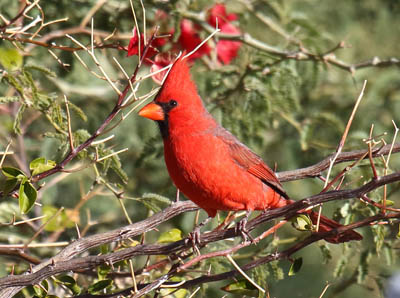
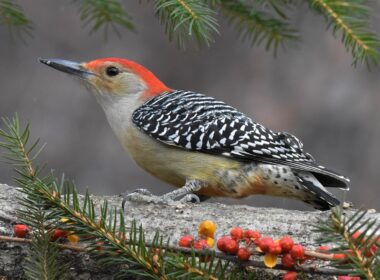
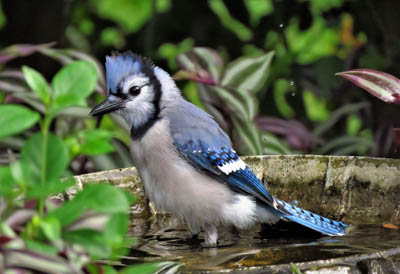
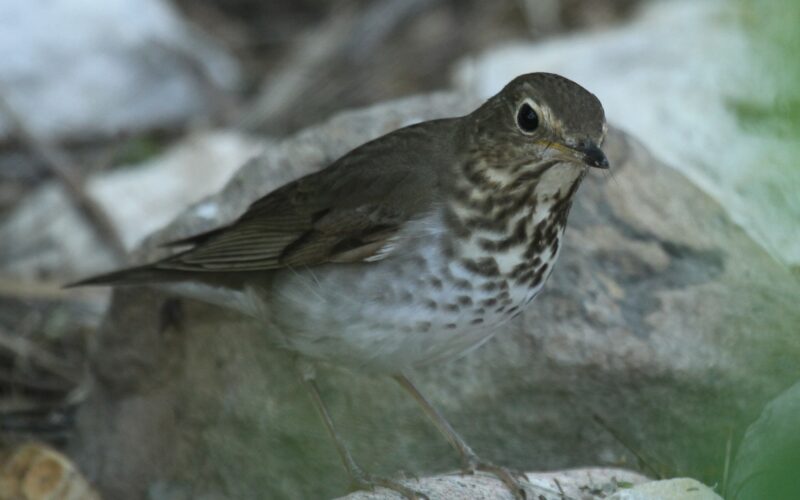

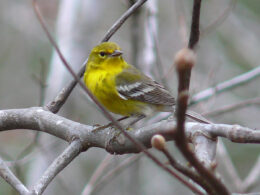
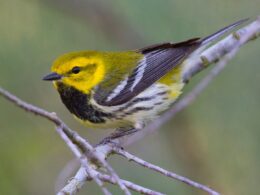
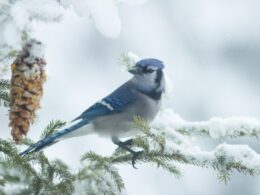
How can I pick out the best service from those listed on this site?
Oregon Photography
I'm not sure what you are asking, David.
I am leaving your comment with the link to your landscaping photography site.